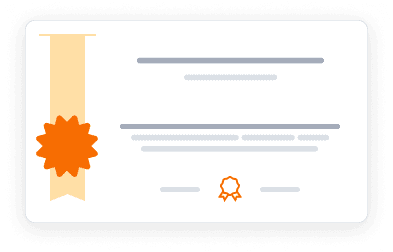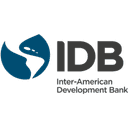Develop expertise in assessing and strengthening infrastructure systems against climate threats through advanced risk analysis and adaptation strategies.
Develop expertise in assessing and strengthening infrastructure systems against climate threats through advanced risk analysis and adaptation strategies.
This advanced course equips professionals with the skills to incorporate climate change resilience and natural disaster risk analysis into infrastructure project design. Over 10 weeks, participants will learn to identify key elements of natural disaster risk, conduct qualitative and quantitative risk analyses, and make informed decisions for infrastructure projects. The curriculum covers disaster risk governance, climate change adaptation, and economic feasibility assessments. Learners will develop the ability to interpret risk analyses, determine when to apply qualitative versus quantitative methods, and make risk-informed recommendations for infrastructure design, construction, and operation. This course, organized by the Inter-American Institute for Economic and Social Development, aims to strengthen project teams' capacity in Latin America and the Caribbean to preemptively manage events that may affect a project's success in the face of climate change and natural disasters.
4.1
(8 ratings)
Instructors:
English
English
What you'll learn
Identify main elements of natural disaster risk in infrastructure projects
Incorporate disaster risk and climate change assessments into project cycles
Conduct qualitative disaster-risk analyses for infrastructure decision-making
Interpret quantitative disaster-risk analyses for project guidance
Determine appropriate risk analysis methods for different project scenarios
Assess technical and economic feasibility of infrastructure projects
Skills you'll gain
This course includes:
PreRecorded video
Graded assignments, exams
Access on Mobile, Tablet, Desktop
Limited Access access
Shareable certificate
Closed caption
Get a Completion Certificate
Share your certificate with prospective employers and your professional network on LinkedIn.
Created by
Provided by

Top companies offer this course to their employees
Top companies provide this course to enhance their employees' skills, ensuring they excel in handling complex projects and drive organizational success.





There are 5 modules in this course
This comprehensive course on natural disaster and climate change risk assessment in infrastructure projects is structured into five modules. The first module establishes the conceptual framework of disaster risk management, focusing on disaster risk governance and climate change adaptation. It explores the dimensions of hazard, exposure, and vulnerability in infrastructure projects. The second module delves into qualitative risk analysis, teaching participants how to prioritize risks affecting infrastructure projects. The third module covers quantitative risk analysis, introducing key concepts and tools like F-N and F-D curves for risk representation and decision support. The fourth module integrates disaster-risk and economic-feasibility analyses in infrastructure projects, examining investment alternatives and decision-making principles. The final module explores disaster risk governance, including climate change adaptation, and provides a methodological framework for incorporating risk analysis into the infrastructure project cycle. Throughout the course, participants learn to apply these concepts to real-world scenarios, enhancing their capacity to design and manage resilient infrastructure projects in the face of climate change and natural disasters.
Conceptual Framework of Disaster Risk Management
Module 1
Qualitative Risk Analysis
Module 2
Quantitative Risk Analysis
Module 3
Making Decisions Incorporating Disaster-Risk and Economic-Feasibility Analyses in Infrastructure Projects
Module 4
Disaster Risk Governance, Including Climate Change Adaptation
Module 5
Fee Structure
Instructors
Distinguished Disaster Risk Management Expert and Policy Innovator
Sergio Lacambra serves as Principal Specialist in Disaster Risk Management at the Inter-American Development Bank, bringing 25 years of experience in Latin America and the Caribbean. After earning his Master's in Economics from the University of London, Erasmus Diploma from the University of Bristol, and Economics Degree from the University of Zaragoza, he has led numerous policy-based and investment loans across the region. As coordinator of the Disaster Risk Management Cluster, he oversees natural disasters contingent credit facilities in multiple countries and led the development of the Index of Governance and Public Policy in Disaster Risk Management (iGOPP). His career includes managing European Union humanitarian aid operations in Central and South America, serving as National Director for Action Aid in Honduras, and working as an environmental economist in the Brazilian Amazon. Through his co-authorship of the Bank's disaster risk screening methodology for infrastructure projects, he continues to advance resilience in development initiatives.

1 Course
Distinguished Disaster Risk Management Expert and Policy Innovator
Ginés Suárez serves as Senior Specialist in Disaster Risk Management at the Inter-American Development Bank's Environment, Rural Development and Disaster Risk Management Division, based in El Salvador. After earning his degree in Geology from the University of Oviedo and Master's in Risk Management and Disaster Management from the National Autonomous University of Honduras, he has built 22 years of expertise in post-disaster recovery and natural resource management. His significant contributions include co-developing the Index of Governance and Public Policy in Disaster Risk Management (iGOPP) and the Bank's infrastructure risk analysis methodology. Through his work designing disaster risk management programs across multiple countries including Belize, Bolivia, Costa Rica, Haiti, Honduras, Mexico, Panama, and Peru, he advocates for a more human-centered approach to disaster recovery while emphasizing the importance of proper governance in risk management
Testimonials
Testimonials and success stories are a testament to the quality of this program and its impact on your career and learning journey. Be the first to help others make an informed decision by sharing your review of the course.
Frequently asked questions
Below are some of the most commonly asked questions about this course. We aim to provide clear and concise answers to help you better understand the course content, structure, and any other relevant information. If you have any additional questions or if your question is not listed here, please don't hesitate to reach out to our support team for further assistance.




